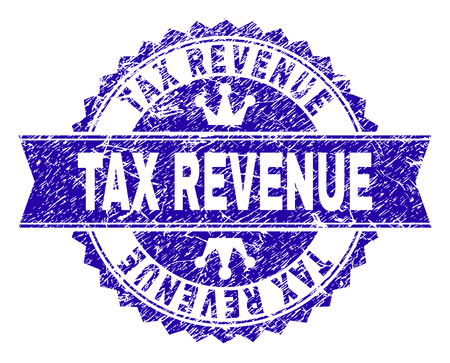Understanding the UK Self-Assessment System
The UK self-assessment tax system is designed to ensure individuals and businesses report their income and pay the correct amount of tax each year. Unlike the Pay As You Earn (PAYE) scheme, where tax is deducted automatically from wages or pensions, self-assessment requires you to declare your income directly to HM Revenue & Customs (HMRC). This process is particularly relevant for self-employed professionals, business owners, company directors, landlords, and those with significant income outside of regular employment. If you receive untaxed income—such as rental earnings, dividends, or foreign income—you are typically required to file a self-assessment tax return.
It’s crucial to be aware of who must complete a self-assessment. This includes anyone whose annual income exceeds £100,000, those claiming certain tax reliefs, and people with complicated financial situations. Additionally, if HMRC sends you a notice to file a return, you are legally obliged to comply—even if you believe you do not owe any tax. For UK residents and businesses, missing key deadlines can result in penalties. The standard deadline for online submissions is 31 January following the end of the tax year (which runs from 6 April to 5 April). Paper returns must be filed by 31 October. Staying organised and understanding your obligations ensures compliance and avoids unnecessary fines or interest charges.
2. Gathering the Necessary Documents and Information
Before you begin your self-assessment tax return in the UK, it is vital to assemble all relevant documents and information to ensure accuracy and compliance. Missing or incomplete records can lead to errors, delays, or even penalties from HMRC. Below is a comprehensive guide to the essential paperwork you will need:
Key Documents Required
| Document | Description | Who Needs It? |
|---|---|---|
| P60 | A summary of your total pay and deductions for the tax year from your employer. | Employees in employment at the end of the tax year |
| P45 | Issued when you leave a job, detailing pay and tax paid so far in the tax year. | Anyone who has changed jobs during the tax year |
| Bank Statements | Evidence of interest income, dividends, and other financial transactions. | All individuals with savings, investments, or business income |
| Pension Statements | Details of any pension income received. | Pensioners and those drawing from private pensions |
| Dividend Vouchers | Proof of dividend payments from shares or investment funds. | Shareholders and investors |
| Rental Income Records | Breakdown of property income and related expenses. | Landlords and property owners |
Additional Information You May Need
- Your National Insurance number (NI number)
- Your Unique Taxpayer Reference (UTR), if you have one
- Details of any other taxable income (such as foreign income or capital gains)
Tips for Staying Organised
- Create a dedicated folder (physical or digital) for each tax year’s documents.
- Request missing statements early—banks, employers, and investment platforms may require time to process these requests.
Why Thorough Documentation Matters
The UK’s self-assessment system places responsibility on individuals to report all sources of income accurately. Having complete documentation not only makes filling out your return more straightforward but also provides evidence should HMRC request clarification or conduct an audit. Ensuring that all paperwork is up to date minimises stress and helps avoid costly mistakes when filing your self-assessment tax return.

3. Registering for Self-Assessment Online
If you are new to self-assessment in the UK, registering with HM Revenue & Customs (HMRC) is a crucial first step before you can file your tax return. Here’s a straightforward guide to help you set up your online account and obtain your Unique Taxpayer Reference (UTR) number.
Step 1: Determine If You Need to Register
First, confirm whether you need to file a self-assessment tax return. Typical scenarios include being self-employed, receiving untaxed income, or being a company director. If any of these apply, you must register with HMRC.
Step 2: Creating a Government Gateway Account
Visit the HMRC online services portal and select ‘Register for Self Assessment.’ You’ll need to create a Government Gateway user ID if you don’t already have one. This process involves providing an email address and setting up a password and recovery information.
Tip:
Make sure to use a valid UK address and keep your login details secure, as you’ll use this portal for future tax submissions and communications with HMRC.
Step 3: Registering as Self-Employed or for Other Income
If you’re self-employed or have additional income to declare, complete the online registration form (form CWF1 for self-employment). You’ll need your National Insurance number and personal details at hand. For other types of income, such as rental or foreign income, select the relevant options during the registration process.
Step 4: Receiving Your Unique Taxpayer Reference (UTR)
Once registered, HMRC will post your UTR—a 10-digit code unique to you—within 10 working days (longer if you’re abroad). You’ll need this reference number whenever you correspond with HMRC or complete your tax return.
Important:
You cannot submit your self-assessment online until you have received your UTR. Keep this number safe, as it is essential for all tax-related matters.
Step 5: Activating Your HMRC Online Account
After receiving your UTR, log back into your Government Gateway account and enrol for the self-assessment online service using the activation code sent by post. Once activated, you’ll be able to access your personal tax account, view correspondence from HMRC, and start preparing your tax return.
Summary Checklist
- Confirm if you need to register for self-assessment
- Create a Government Gateway account
- Register for self-employment or relevant income category
- Wait for your UTR to arrive by post
- Activate your HMRC online account using the code provided
This step-by-step approach ensures that you are properly set up with HMRC, making the rest of the self-assessment process much more manageable and compliant with UK regulations.
4. Completing Your Tax Return Form (SA100)
Filling out the SA100 form is a crucial step in the UK self-assessment process. Accuracy is vital to ensure compliance with HMRC regulations and to avoid unnecessary penalties or delays. Below are expert tips tailored to UK-specific income sources, allowances, and deductions, designed to help you complete your tax return confidently.
Understanding the SA100 Structure
The SA100 form is divided into several sections covering personal details, various types of income, reliefs, and declarations. Familiarising yourself with the structure beforehand will streamline your completion process.
Common UK Income Sources
| Income Type | Where to Report | Key Considerations |
|---|---|---|
| Employment Income | Employment pages (SA102) | Use P60/P45; check for benefits-in-kind (P11D) |
| Self-Employment | Self-employment pages (SA103) | Declare gross turnover and allowable expenses |
| Pension Income | Pension pages (SA101) | Include state, workplace, and private pensions |
| Savings & Investments | Savings & Investment pages (SA100 Sections 2/3) | Include bank interest, dividends, and capital gains |
| Property Income | UK property pages (SA105) | Declare rental income minus allowable costs |
| Foreign Income | Foreign pages (SA106) | Report overseas earnings; check double taxation treaties |
Maximising Allowances and Deductions
The UK tax system provides several allowances and deductions that can significantly reduce your tax liability if claimed correctly:
- Personal Allowance: Most individuals can earn up to £12,570 tax-free (2023/24). Ensure this is correctly applied on your return.
- Savings Allowance: Basic-rate taxpayers can earn up to £1,000 in savings interest tax-free; higher-rate taxpayers up to £500.
- Dividend Allowance: The first £1,000 of dividend income is tax-free.
- Pension Contributions: Contributions to registered pension schemes may qualify for tax relief—report accurately for maximum benefit.
- Gift Aid Donations: Charitable donations under Gift Aid can increase your basic rate band—include all eligible donations.
- Marriage Allowance: If eligible, transfer part of your Personal Allowance to your spouse or civil partner.
- Business Expenses: Self-employed individuals should claim all legitimate expenses, such as office costs, travel, and professional fees.
- Rental Property Expenses: Only claim allowable costs such as mortgage interest (restricted), repairs, letting agent fees, and council tax.
Pitfalls to Avoid When Completing SA100
- Mismatched Figures: Always cross-check figures with official documents like P60s, P45s, and bank statements.
- Omitted Income: Declare all taxable income sources—even small amounts from side jobs or investments.
- Lack of Supporting Records: Maintain receipts and records for at least 22 months after the end of the tax year in case HMRC requests evidence.
- Error on National Insurance Numbers or UTR: Double-check these reference numbers for accuracy—they are essential identifiers for HMRC processing.
- Lateness: Submit your return by 31 January following the end of the tax year to avoid automatic penalties.
An accurate SA100 submission ensures you pay only what you owe while maximising available reliefs. Take time to review each section carefully before submitting online via HMRC’s portal or through your chosen software provider. If in doubt, seek advice from a qualified accountant experienced in UK taxation.
5. Submitting Your Return and Paying Any Tax Owed
Advice on Submission Methods
In the UK, there are two main ways to submit your Self-Assessment tax return: online through the HMRC portal or via a paper form. The online method is strongly recommended, as it provides instant confirmation of receipt and allows you to benefit from helpful prompts that reduce errors. Remember, the deadline for submitting online returns is 31 January following the end of the tax year, while paper returns must be filed by 31 October. Register for an HMRC online account well in advance, as activation codes can take up to ten days to arrive by post.
Payment Options Explained
Once you have submitted your return, HMRC will confirm any tax owed. You can settle your bill using several methods: direct debit, online banking (Faster Payments, CHAPS or Bacs), debit or corporate credit card (personal credit cards are not accepted), at your bank or building society, or by cheque through the post. It’s wise to make payments ahead of the 31 January deadline to avoid late payment penalties and interest. Setting up a Budget Payment Plan with HMRC is also an option if you wish to spread your payments over the year.
Common Pitfalls to Avoid
- Missing Deadlines: Filing or paying late incurs automatic penalties and daily interest on overdue amounts.
- Incorrect Information: Ensure all details match official records, including your National Insurance number and income figures, to prevent delays or investigations.
- Forgetting Allowances: Take full advantage of allowable expenses and tax reliefs—overlooking these can lead to paying more than necessary.
- Poor Record-Keeping: Maintain organised records for at least five years after the submission deadline, as HMRC may request evidence of income and expenses.
Professional Advice
If you feel uncertain about any aspect of submitting your return or calculating your tax liability, consider consulting a qualified accountant or tax adviser familiar with UK regulations. This can provide peace of mind and help ensure compliance with HMRC requirements.
6. What Happens After Submission & How to Handle Enquiries
Once you have filed your Self-Assessment tax return online or by post, it is important to understand the next steps and how to respond if HMRC (Her Majesty’s Revenue and Customs) raises any questions.
Confirmation of Submission
After submitting your return online, you will receive immediate on-screen confirmation and an email from HMRC acknowledging receipt. If you file by post, allow several days for HMRC to process your paperwork and issue a confirmation letter. Keep these confirmations safe as proof of timely submission.
Payment and Refund Timelines
If you owe additional tax, payment is typically due by 31 January following the end of the tax year. Late payments attract interest and possible penalties, so ensure funds are transferred promptly via your preferred method—be it bank transfer, debit card, or Direct Debit. Conversely, if you are due a refund, HMRC usually processes repayments within two weeks for online submissions and up to six weeks for paper returns. Refunds are generally paid directly into your nominated UK bank account.
Further Communication from HMRC
HMRC may contact you after reviewing your return. This could be a simple request for clarification or supporting documents. Most queries are resolved through correspondence, but in some cases, a more formal enquiry may be opened.
What Triggers an Enquiry?
An enquiry can be triggered randomly or because something in your return doesn’t match HMRC records. Common triggers include significant discrepancies in income, missing information, or claims for unusual expenses.
How to Respond to an Enquiry
If contacted by HMRC:
- Respond promptly and courteously to all requests.
- Provide accurate copies of requested documents such as invoices, receipts, or bank statements.
- If unsure about any aspect, consider consulting a chartered accountant or tax adviser with experience in UK self-assessment matters.
Your Rights During an Enquiry
You have the right to be treated fairly and professionally during any investigation. If you disagree with HMRC’s findings or proposed adjustments, there is a formal appeals process available.
Record Keeping Obligations
Maintain all relevant records for at least five years after the 31 January submission deadline for each tax year. This ensures you can support your claims if queried and avoid potential penalties.
Final Thoughts
The period after filing is crucial for managing your finances and maintaining compliance. Stay alert for communications from HMRC and respond proactively to protect your interests. If in doubt, seek professional advice tailored to the UK’s tax environment.


